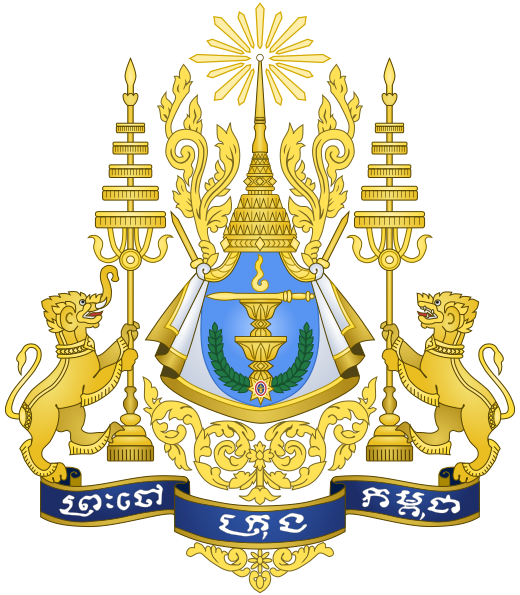About KH

Location
Cambodia is a country located in Southeast Asia, bordered by Thailand to the west and northwest, Laos to the north, Vietnam to the east and southeast, and the Gulf of Thailand to the southwest.
Capital
The capital city of Cambodia is Phnom Penh, which is also the largest city in the country.
Population
As of the latest estimates, Cambodia has a population of approximately 16.9 million people.
Area
Cambodia covers a total land area of about 181,035 square kilometers (69,898 square miles).
Official Language
The official language of Cambodia is Khmer.
Government
Cambodia is a constitutional monarchy with a parliamentary system of government. The King of Cambodia serves as the head of state, while the Prime Minister is the head of government. The country operates under a multi-party democracy.
Independence
Cambodia gained independence from France on November 9, 1953.
Currency
The currency of Cambodia is the Cambodian riel (KHR), although the United States dollar (USD) is also widely used in the country.
Economy
Cambodia's economy is primarily based on agriculture, manufacturing, tourism, and textiles. The country has experienced rapid economic growth in recent years, driven by foreign investment, particularly in the garment and tourism sectors. Agriculture, including rice cultivation, fishing, and rubber production, remains a significant source of income for many Cambodians.
Tourism
Cambodia is known for its rich cultural heritage and historical sites, including the famous Angkor Wat temple complex, which is a UNESCO World Heritage Site. Tourism is a major contributor to the country's economy, with visitors drawn to its ancient temples, beautiful beaches, and vibrant culture.
Culture
Cambodian culture is influenced by Buddhism, which is the predominant religion in the country. The Khmer people have a rich artistic tradition, including classical dance, music, and architecture. Traditional festivals, such as Khmer New Year (Chaul Chnam Thmey) and the Water Festival (Bon Om Touk), are celebrated with great enthusiasm throughout the country.
Education
Cambodia has made significant strides in improving access to education in recent years. However, challenges remain, particularly in rural areas where access to quality education is limited. The country has several universities and educational institutions, with efforts underway to improve the overall quality of education.
History
Cambodia has a complex history, including the ancient Khmer Empire, which flourished from the 9th to the 15th centuries and built the famous Angkor temples. In more recent history, Cambodia experienced a period of brutal rule under the Khmer Rouge regime in the late 1970s, during which millions of people were killed or died from starvation and disease.

National Items of Cambodia
Kouprey
The Kouprey (Bos sauveli) is the national animal of Cambodia. This wild ox, known for its distinctive horns and elusive nature, symbolizes strength, resilience, and the country's rich wildlife heritage.
Rumduol
The Rumduol (Mitrella mesnyi) is the national flower of Cambodia. Its fragrant and delicate white blossoms symbolize beauty, purity, and the natural flora of the country.
Sugar Palm
The Sugar Palm (Borassus flabellifer) is the national tree of Cambodia. Known for its economic and cultural significance, it symbolizes sustainability and the agricultural heritage of the country.
Angkor Wat
Angkor Wat is the most famous temple complex in Cambodia and a UNESCO World Heritage Site. It symbolizes the country's rich historical and cultural heritage and is a source of national pride.
Fish Amok
Fish Amok is a traditional Cambodian dish made from fish, coconut milk, and a blend of spices, steamed in banana leaves. It represents the rich culinary traditions and flavors of Cambodia.
Cambodian Riel
The Cambodian Riel (KHR) is the currency of Cambodia. It symbolizes the country's economic heritage and financial stability.
Sampot
The Sampot is a traditional garment worn in Cambodia, similar to a sarong. It symbolizes the cultural heritage and traditional attire of the Cambodian people.
Apsara Dance
The Apsara Dance is a traditional Khmer dance that features graceful movements and intricate costumes. It symbolizes the artistic and cultural heritage of Cambodia.
Lotus Flower
The Lotus Flower (Nelumbo nucifera) holds significant cultural and religious importance in Cambodia. It symbolizes purity, enlightenment, and the spiritual traditions of the country.
Royal Palace in Phnom Penh
The Royal Palace in Phnom Penh is a symbol of the country's royal heritage and architectural beauty. It represents the monarchy and the historical significance of the Cambodian capital.

This anthem celebrates the monarchy, the nation, and the endurance of the Khmer people. It also acknowledges the historical significance of the Khmer Empire, particularly during the reign of Suryavarman II, who built the iconic Angkor Wat temple complex.
The national anthem of Cambodia is called "បទនគរបាល" (Nokoreach) in Khmer, which translates to "Royal Kingdom" in English. Here are the lyrics in Khmer along with an English translation:
បទនគរបាល បានជួបឯករាជ្យ ចំពោះជាតិក្រុងខែមរ
ដោយចាប់អារម្មណ៍ ចង់ពុះអង្ការ
សុំទោសពលរដ្ឋ ពីកម្ពុជាទុកសិន
ប្រសើរប្រសាទបញ្ញាស្រី
បទនគរបាល បានជួបឯករាជ្យ ចំពោះជាតិក្រុងខែមរ
នៅលើទូកអង្ការម៉ូលីដេល
បានបញ្ជូនបងប្អូន ពីខេត្តក្រុងក្រែងខ្មែរ
សូមទោសពលរដ្ឋ ពីព្រំដែននគរបាល
ដោយព្យាយាមនិយមនៅព្រំដែនទៅដល់
បទនគរបាល បានជួបឯករាជ្យ ចំពោះជាតិក្រុងខែមរ
Royal Kingdom, long live the King,
For the Nation, Religion, and the King.
The Khmer race will thrive, will thrive,
The Khmer race will thrive for eternity.
In the reign of Suryavarman II, our grand city,
For our children and grandchildren,
Please accept, Lord, this offering of a grateful heart
For the land protected by You.
Royal Kingdom, long live the King,
For the Nation, Religion, and the King.


